Salesforce Field Service Customisation Case Study


The client is an insurance restoration company that provides restoration, as well as consulting services to stakeholders and insurance carriers. The Salesforce partner with whom the client had partnered earlier failed to cater to the evolving needs of their business and their future expansion plans. The client was seeking a partner who could help them manage their field service operations more effectively. Girikon was chosen by the client based on their proven track record in implementing Salesforce for building services companies.
The client is a company specialising in large and complex losses. Founded in 1996, the client business provides services in key areas including asset restoration and repair in fire or flood damage events, inventory removal and storage during reinstatement projects, emergency make-safe, and major loss consulting services. Headquartered in Sydney, they have offices scattered across NSW and QLD. They provide their clients with local support teams that can understand projects thoroughly and bridge communications between clients and their technicians.
At the time that the client contacted Girikon, they had their Salesforce Service Cloud and Salesforce Field Service in place. However, the previous implementation with the other partner resulted in several problems.
To begin with, even though Salesforce had been integrated with external systems such as Xero and AWS, they still got errors trying to sync invoices from Xero to Salesforce. For example, invoices marked as ‘paid’ in Xero were not automatically marked as ‘paid’ in Salesforce. Besides, an integral part of their pack-out services was to manage many photos as evidence for items’ conditions, but after the initial Salesforce integration with AWS, staff could only upload a limited number of photos from Salesforce to AWS.
Next, though the client’s business grew, their current Case Management system could not support the increasing number of Cases and field technicians or align with their unique business requirements.
Third, many processes in the organisation, including Case status updates and Work Plan creation relied mainly on staff data manual entry costing the organisation time, introducing human errors, and causing major delays. Work Plans, for instance, were generated one by one, and required manual intervention after the Work Order was created. Users had to click on a “Generate Work Plan” button to initiate the Work Plan creation process. Regarding Cases, the quality of Case reporting was compromised, as by the time enough information was collected to generate a report or dashboard, many Cases would have progressed.
After several discussions and discovery sessions on how to best manage their Salesforce, Girikon came up with several solutions for the client.
1. Efficient Invoice Process
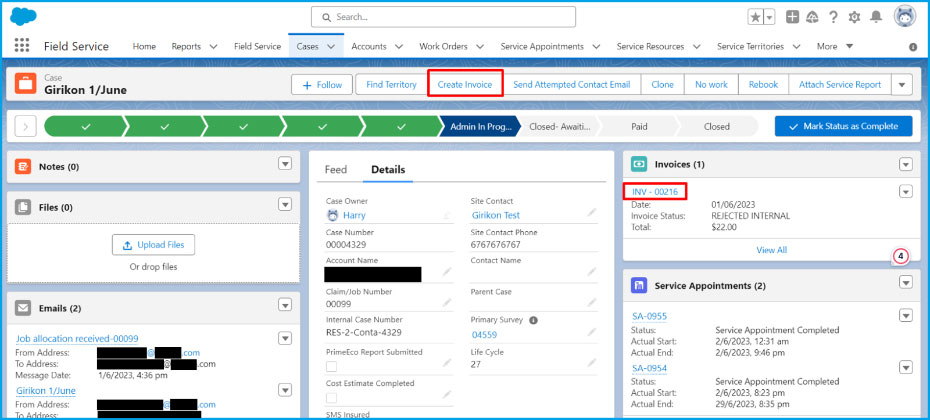
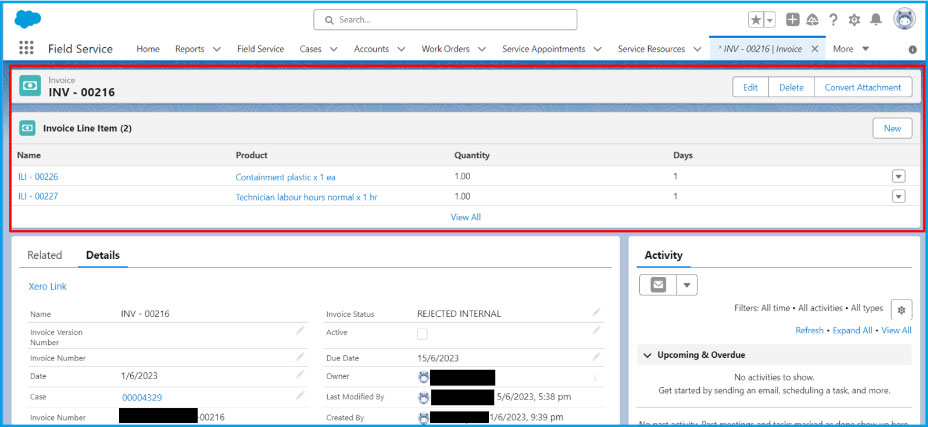
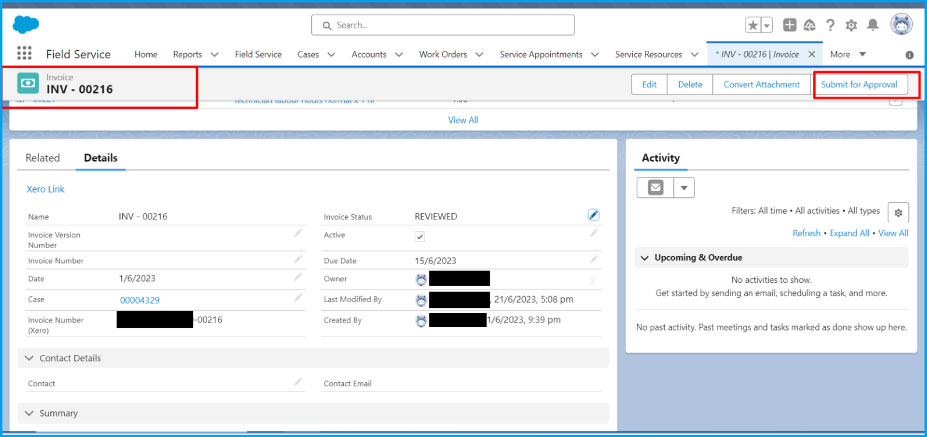
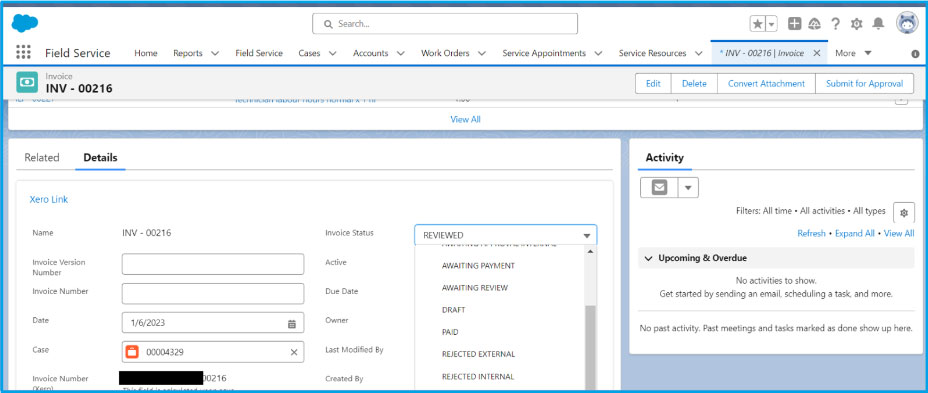
2. Streamlined Case Management: The implementation of the Case Management system has resulted in a streamlined process. Case statuses are now automatically updated based on predefined information, ensuring accurate and real-time visibility into Case progress and enabling efficient tracking and resolution.
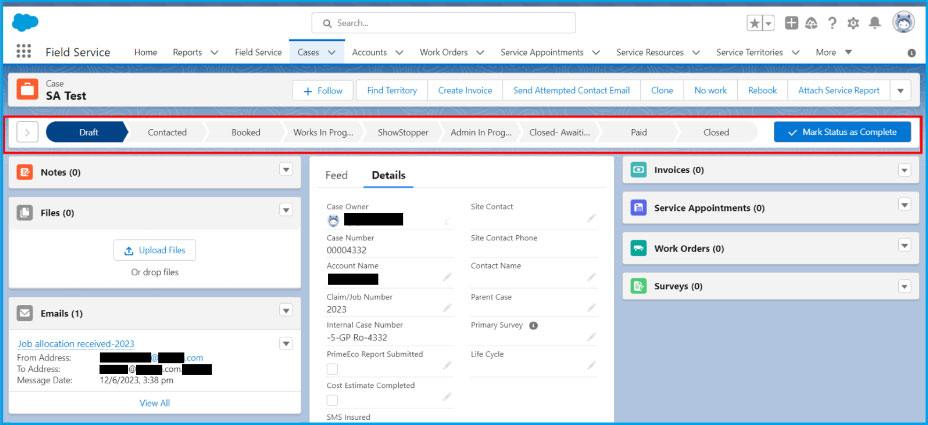
3. Enhanced Work Step, Work Plan and Work Order
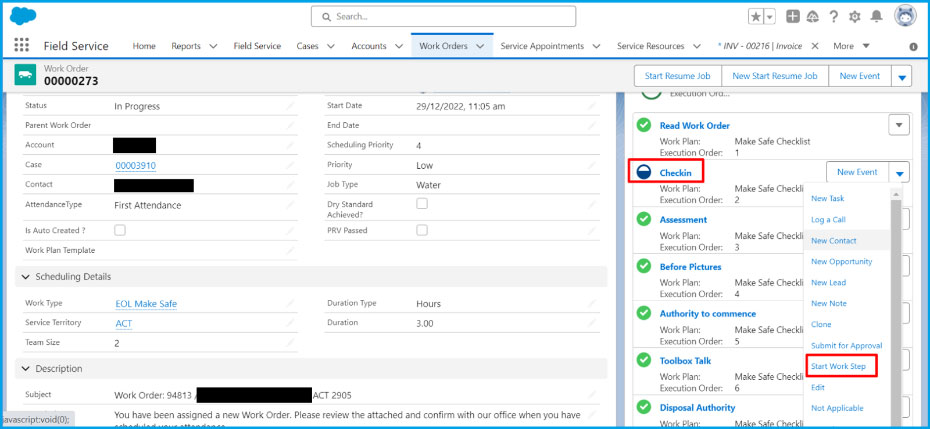
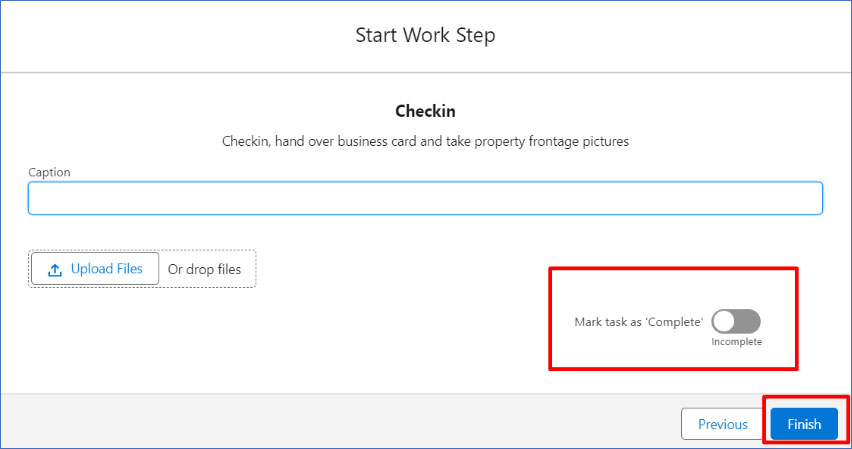
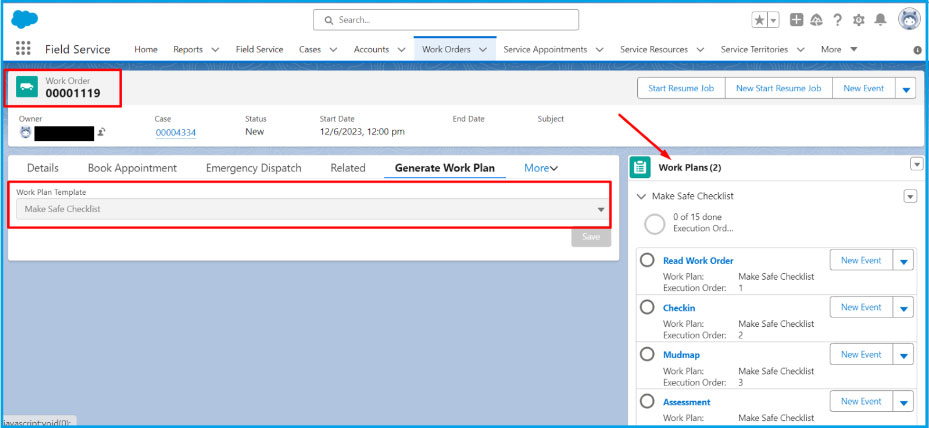
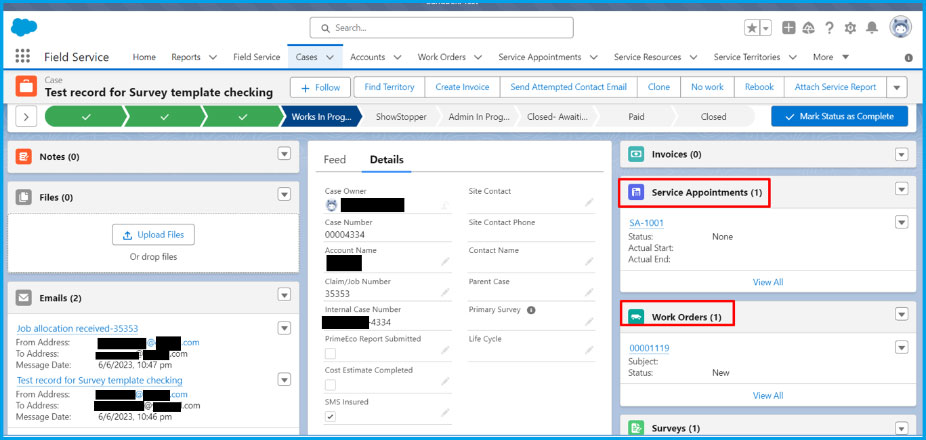
In short, the implementation of the Case Management system with these features has brought about substantial improvements for their Salesforce Field Service, especially in the following areas:








